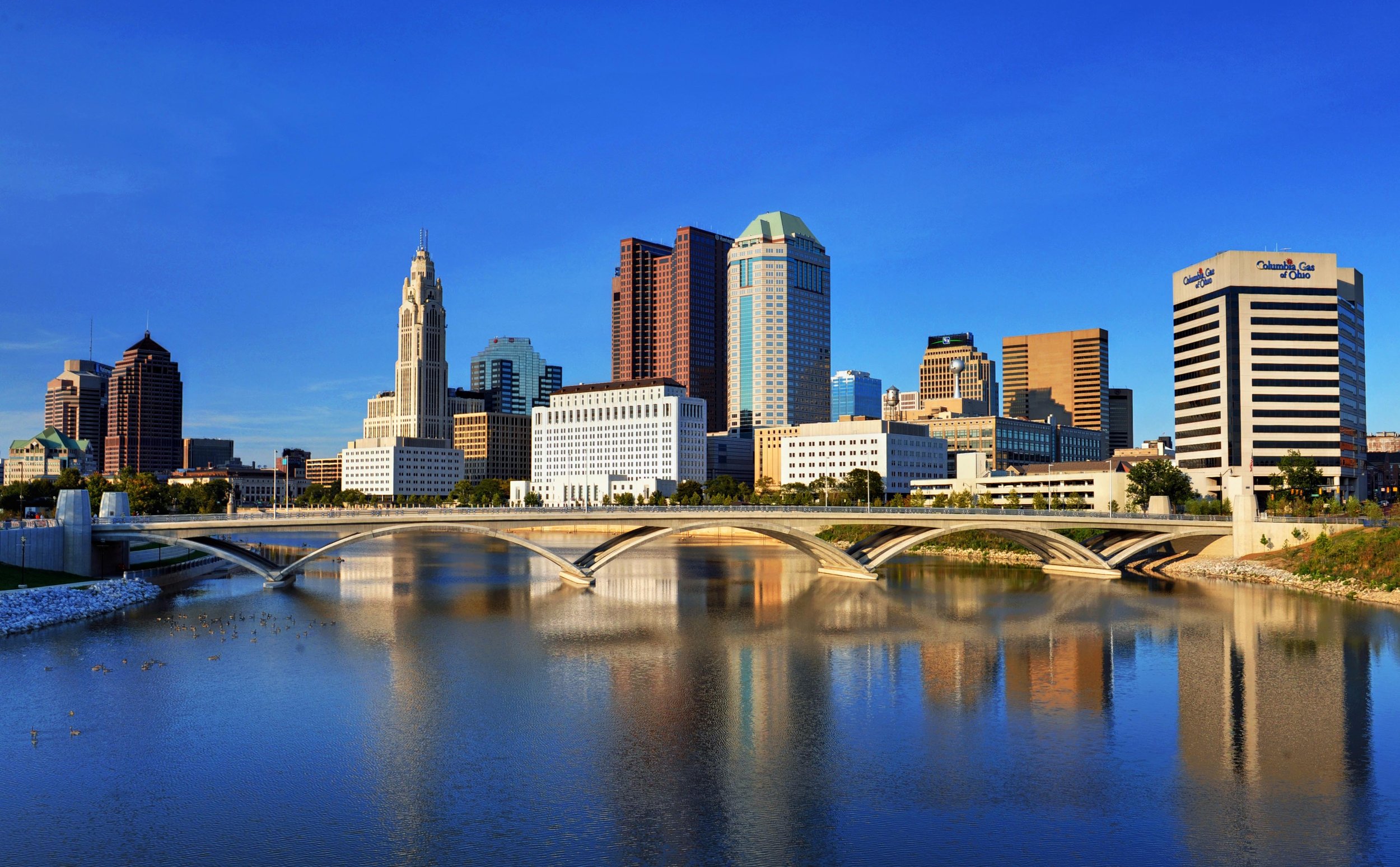
Rich Street Bridge,
Columbus, Ohio
The Rich Street Bridge is the centerpiece of three bridges over the Scioto River in the city’s historic Civic Center. The bridge combines the span arrangement of the traditional Discovery Bridge upstream with the open, contemporary appearance of the Main Street bridge downstream, uniting the three into a Family of Bridges.

The postcard view at night. The lighting illuminates the space under the bridge, making the riverwalks and adjoining banks inviting and encouraging activity long into the evening.

High strength precast concrete and internal steel post-tensioning strands makes the structure remarkably thin. The edges of the arches are angled to make them appear even thinner. Key dimensions, like the radii of the arches, are standardized, allowing the 60 pieces that make up structure of the bridge to be cast off site in just three steel forms.
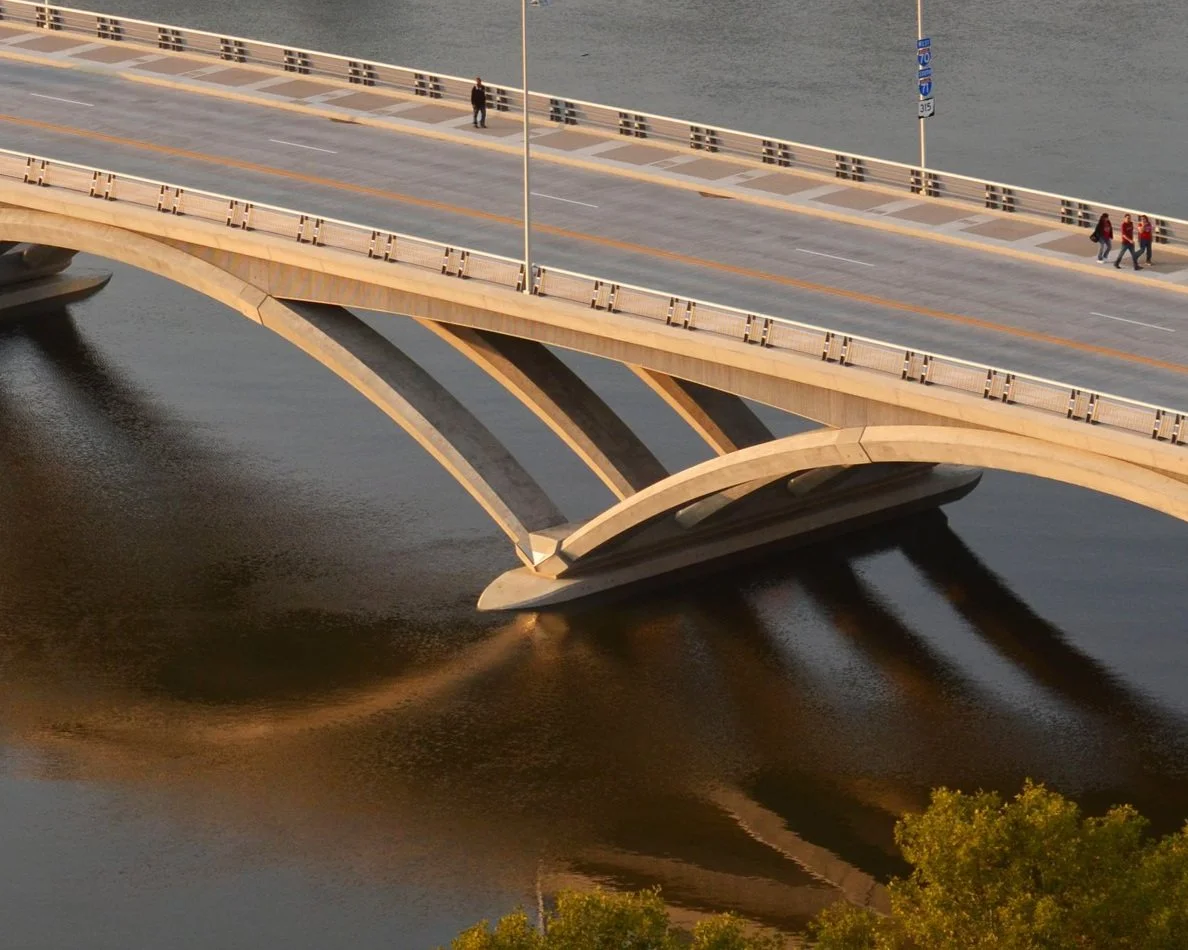
Reflective metal elements like the lighting on the railings and the stainless steel debris deflectors at the bases of the arches catch the sun, creating a sparkle that brings the bridge to life.
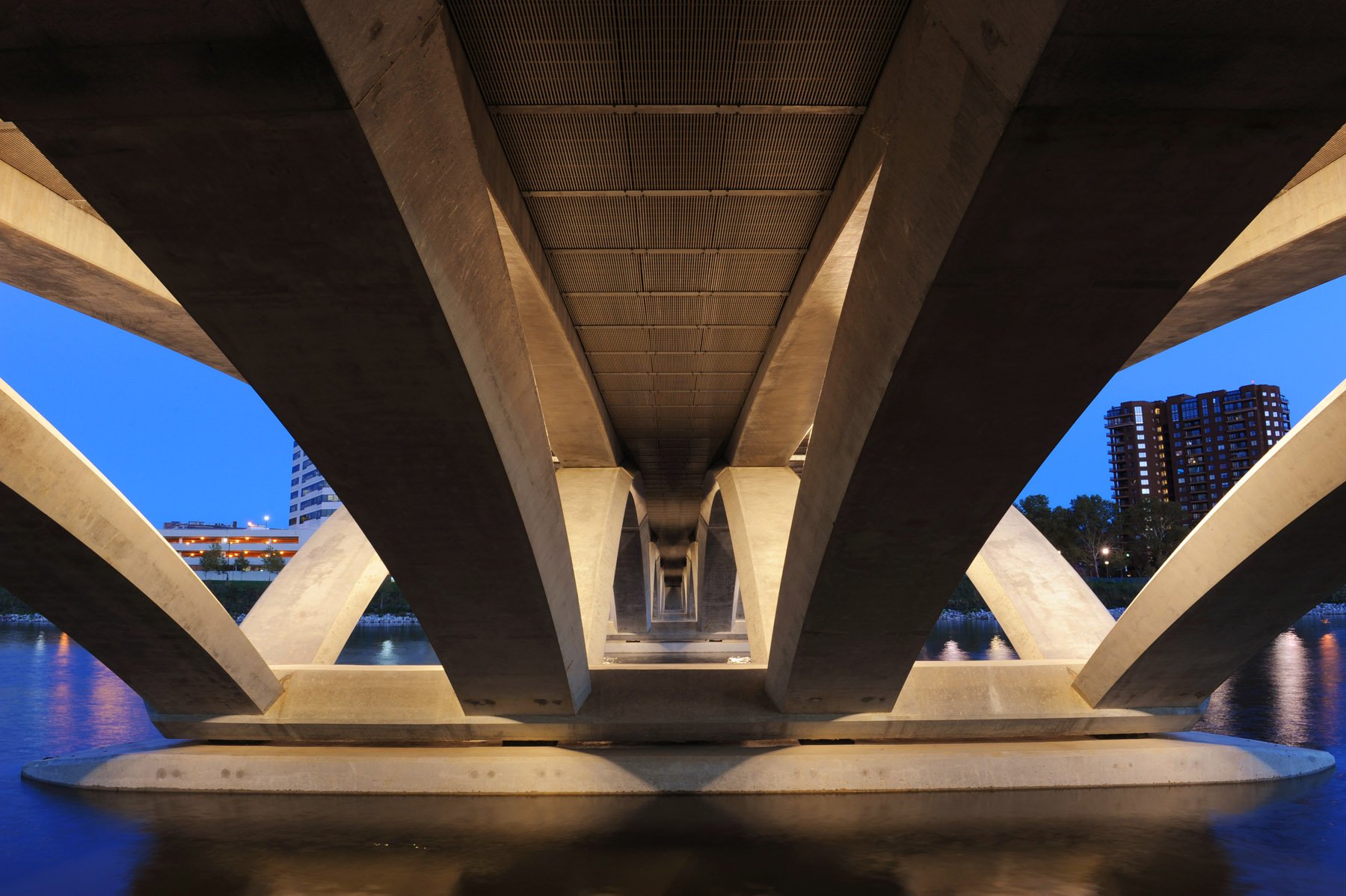
The utility lines under the bridge are screened from view and from pigeons, making the riverwalks below inviting, clean and safe..
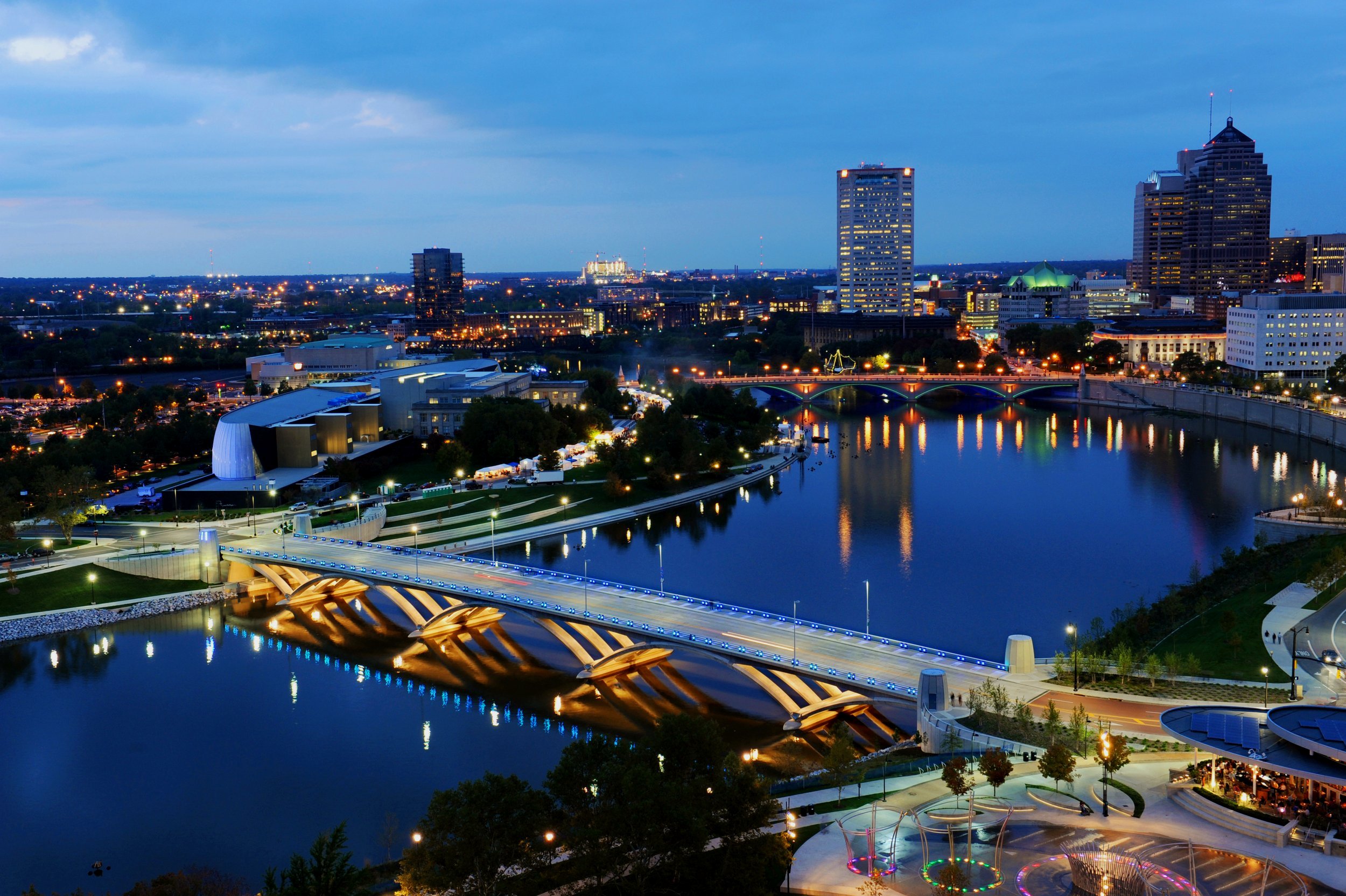
The bridge’s eye-catching lighting and wide sidewalks support nearby uses like the Central Ohio Science Institute (COSI) on the far bank and the popular restaurant and plaza on the near bank. The bridge also provides space and utility support for the art and cultural festivals that are periodically installed on its deck.

The pylons at corner of the bridge emulate the COSI building, while the scale and proportions of the railings emulate the traditional monumental architecture of the historic the Civic Center..
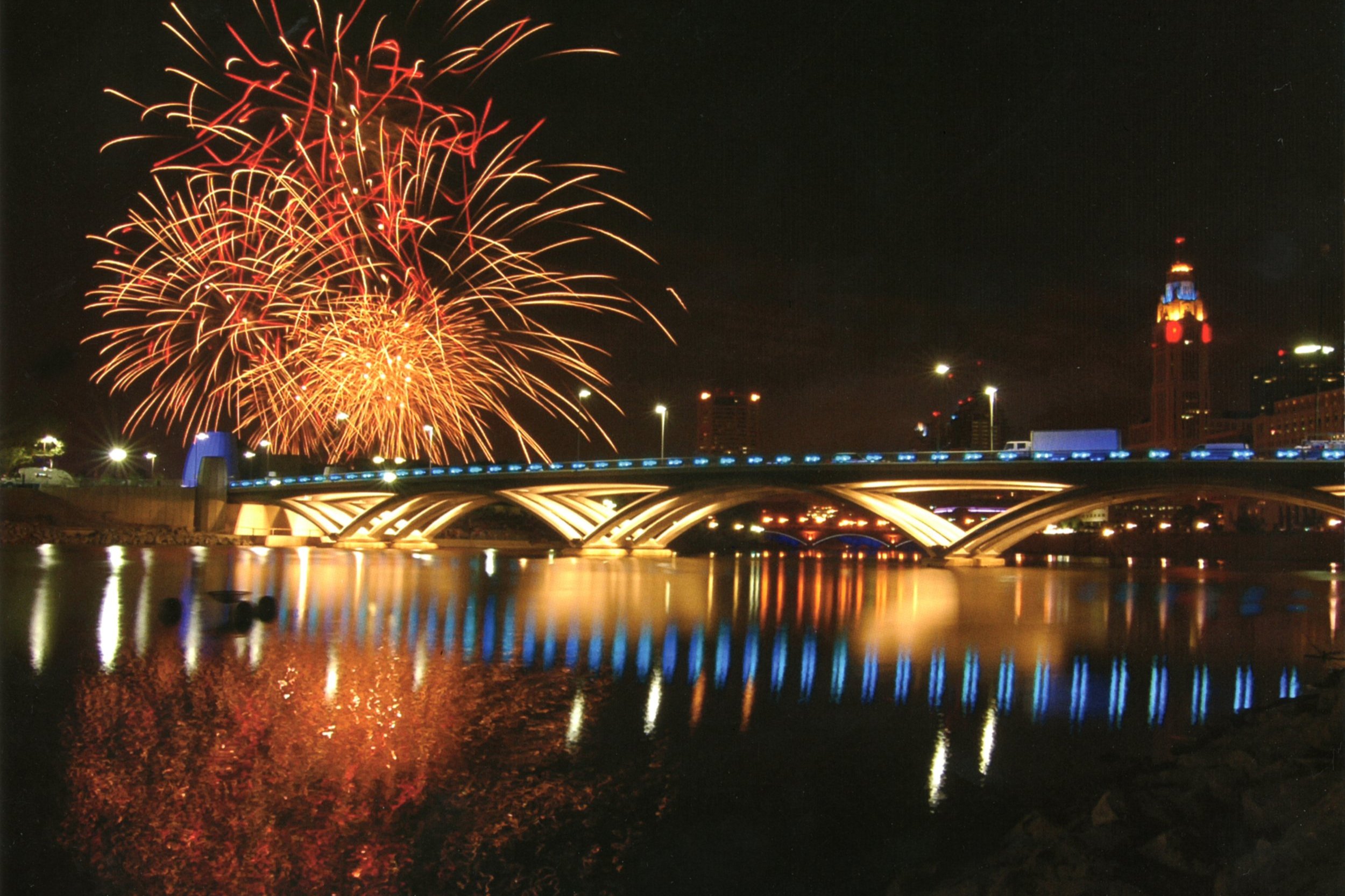
Columbus’ Fourth of July adds its celebratory splendor to the “postcard view” of the skyline.
“This is a magnificent bridge design, the FINEST of our downtown collection of bridges!!!”
Postscript:
Several years after the Rich Street bridge was finished the city decided to remove a low dam downstream. The dam had been in place for roughly 100 years. It was part of Columbus’ 1920’s “City Beautiful” Plan. The Plan intended the pool to provide a reflective foreground for the monumental buildings of the Civic Center and a “platform” for the Scioto River bridges. The dam was removed to restore the natural flow of rge river. The change lowered the water surface 8 feet and cut the river’s width from about 500 feet to about 250 feet. The 125 foot wide strips of new land (formerly river bottom) on each side of the river were converted into linear parks, with the former riverwalks now paved pathways in the new landscape.
The Rich Street Bridge no longer appears to rest on a reflective plane of water. The pilings supporting the center piers were exposed and enclosed by concrete sheaths. The outer piers now rest on the park landscaping. Since the outer piers are now accessible, they have become climbing opportunities for youngsters and backgrounds for selfies, evidence that the community has adapted the bridge to its new environment

